I just finished reading this article concerning the Air Force waiting for things to break in their shore  infrastructure instead of doing preventative maintenance. My first thought was, “I sure hope that doesn’t include nukes!!!” From what I can tell from the article, maybe yes, maybe no. So that has me a little worried. But there were several other things about that article that worried me.
infrastructure instead of doing preventative maintenance. My first thought was, “I sure hope that doesn’t include nukes!!!” From what I can tell from the article, maybe yes, maybe no. So that has me a little worried. But there were several other things about that article that worried me.
First, it said that the Services only submitted about 80% of what they needed for facilities maintenance because they wanted to put priority on training and operations instead of maintaining their buildings. I believe the idea was to fix things as they fail. Who wants to be in a building that might “fail”? Not me. I’m puzzled as to why they wouldn’t ask for everything needed since the money for such things comes from different appropriations than training and operations. By the way, they got all that they asked for which leaves me wondering what would have happened if they asked for what they really needed.
Second, what makes them think there’s going to be any more money in the out-years to make things right? If we are deferring maintenance, then it stands to reason that it’s only going to cost more to fix next year. We already know that money is not going to be there. Personally, I’m not so sure about jumping on an elevator in an Air Force building knowing that it hasn’t been maintained and the threshold for them to do any maintenance on it is me getting stuck between floors. I’d also be careful about walking around on an AFB if I were you. You never know when something above might “fail.”
By the way, this is not just an Air Force problem. Here is a similar article about Navy facilities and infrastructure. Stunningly, it says that of the 13 barracks at NAS Oceana, 10 of them are rated substandard. What happened to taking care of our number one asset….our Sailors. And we only asked for 80% of the money to fix them??
Thirdly, one Commander in the article is worried that money for repair is so short, that even when things break there will not be enough money to fix them. Little wonder, since they only asked of 80% of what they needed. I suppose they are hoping for some sort of natural disaster so they can go in for supplemental funding to fix everything.

Once something happens, there will be a feeding frenzy at the supplemental trough to fix not only what was damaged by said disaster, but also stuff that was damaged by neglect. What a world!
Finally, it says that the Air Force is not planning on returning to “full spectrum readiness” (whatever that means) until 2023. That must mean they have a plan….but since when has any service been able to stick to a plan more than a couple of years???? Heck, in the Navy, we change the 30 Year Shipbuilding plan just about every year!
As for the using maintenance dollars to buy readiness, I thought that is what the Overseas Contingency money was supposed to do. Remember the almost $60 Billion in OCO for 2016? So even as a former practitioner of the mystical and black art of Defense budgeting, I just can’t figure out why we didn’t ask for all the money we needed to maintain our infrastructure in “war fighting condition.”  After all, especially in the Air Force, their bases are where they fight wars from…It’s analogous to the Navy’s ships. I guess the old saying that the Air Force only builds runways after the O”Club, golf course, pool, commissary and exchange are built isn’t true anymore. I guess now is should be, “If it ain’t broke, don’t fix it. If its broke, good luck getting it fixed!”
After all, especially in the Air Force, their bases are where they fight wars from…It’s analogous to the Navy’s ships. I guess the old saying that the Air Force only builds runways after the O”Club, golf course, pool, commissary and exchange are built isn’t true anymore. I guess now is should be, “If it ain’t broke, don’t fix it. If its broke, good luck getting it fixed!”
I recall reading an article not long after the Berlin Wall fell which said the conditions in East German bases were puzzling. The barracks the soldiers were living in were barbaric…..but just across the street, the tanks, personnel carriers, trucks, artillery and lots of other weapons were sitting in pristine condition in air conditioned splendor. This is what happens when we value things over people. Hey, recruiting is at an all time high. We could probably stand a few people jumping ship anyway. Why not skimp on their facilities so that we can continue to pay for the cost overruns of the JSF and other out-of-control acquisition programs?
On the other hand, I suppose you could say that this problem is yet another symptom of the need for another round of BRAC. Good luck with that!
Oh, by the way, no facilities were damaged in the writing of this article.



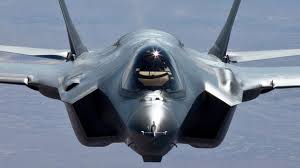


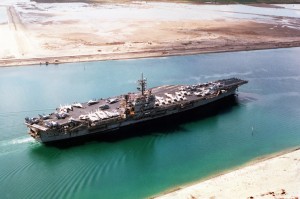

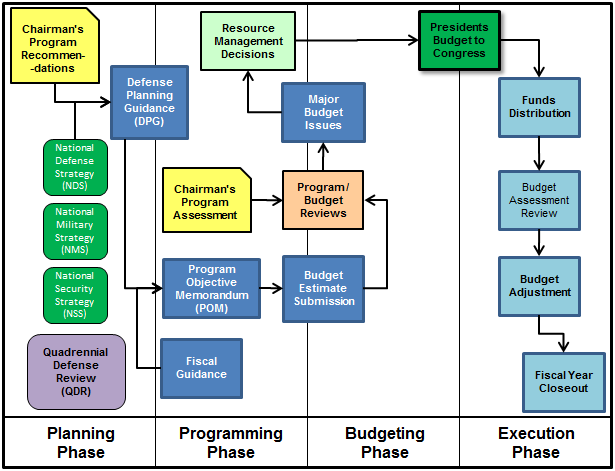
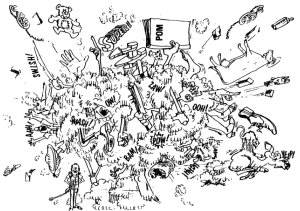
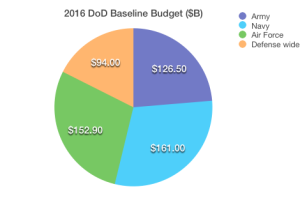




 It’s the world where everything is backwards….the name of the bizarro world planet is Htrae (so clever!) and the world is square. As I recall, it was featured occasionally in Superman comics in the 1960’s. One of the mottos in Bizarro World was ” Us do opposite of all earthly things.” Bizarro bonds were a hot item on Htrae because they were “guaranteed to lose money.” So I don’t think it’s a huge stretch to make the analogy here.
It’s the world where everything is backwards….the name of the bizarro world planet is Htrae (so clever!) and the world is square. As I recall, it was featured occasionally in Superman comics in the 1960’s. One of the mottos in Bizarro World was ” Us do opposite of all earthly things.” Bizarro bonds were a hot item on Htrae because they were “guaranteed to lose money.” So I don’t think it’s a huge stretch to make the analogy here. A few days after the decision was made, the staff came back and noted that since we slid the ship a year, it’s going to cost more…..I don’t remember how much, but it was around $100 Million or so. “Really?” I commented. ‘Oh, yes,” came the reply, ” money will cost more the next year, we have shipyard loading issues that we will have to pay for, the cost of steel is going up, blah, blah blah.” So I began to understand that the economics of shipbuilding were different. I formulated The Shipbuilding Entropy Rule: “Nothing ever costs less. NO matter what you do, it will always cost more.” You buy less, they cost more. You cancel the buy, you still have to pay the overhead. You remove capability, it costs more to redo drawings. Its all very counter-intuitive. This became very clear to me during the following year’s budget build when the staff came back and said “We made a mistake. We have to move the LMSR back to the original purchase year.” “Fine,” I replied, “No harm, no foul.” Sensing it wasn’t “Fine“, based on the furtive glances between the staffers (an admiral sees a lot of those looks in the Pentagon) I asked “What’s wrong?” Turns out, if we moved the ship back into the original purchase year, it added another $100 Million to the cost! Whadakknow? We essentially did nothing and paid $200 Million not to do it! That, my friends, is Bizarro accounting!
A few days after the decision was made, the staff came back and noted that since we slid the ship a year, it’s going to cost more…..I don’t remember how much, but it was around $100 Million or so. “Really?” I commented. ‘Oh, yes,” came the reply, ” money will cost more the next year, we have shipyard loading issues that we will have to pay for, the cost of steel is going up, blah, blah blah.” So I began to understand that the economics of shipbuilding were different. I formulated The Shipbuilding Entropy Rule: “Nothing ever costs less. NO matter what you do, it will always cost more.” You buy less, they cost more. You cancel the buy, you still have to pay the overhead. You remove capability, it costs more to redo drawings. Its all very counter-intuitive. This became very clear to me during the following year’s budget build when the staff came back and said “We made a mistake. We have to move the LMSR back to the original purchase year.” “Fine,” I replied, “No harm, no foul.” Sensing it wasn’t “Fine“, based on the furtive glances between the staffers (an admiral sees a lot of those looks in the Pentagon) I asked “What’s wrong?” Turns out, if we moved the ship back into the original purchase year, it added another $100 Million to the cost! Whadakknow? We essentially did nothing and paid $200 Million not to do it! That, my friends, is Bizarro accounting!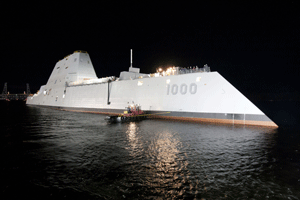 They became so expensive and the requirements bounced around so much, we began advertising it as a fire support ship vital to the survival of the Marines during amphibious assaults. As such, we only needed about 10-12, just enough to support the number of amphibious ready groups (ARGS) we had at the time. The Marines were happy about that, even though they preferred to have 2 per ARG. I even went over to the Hill with my Marine counterpart extolling the virtues of the DDG-21 as the perfect fire support ship for the Marines. But once the Marines realized that the cost of the ship was so high that it would probably limit the amount of other stuff they could buy, they dropped it like a hot potato…..they would much rather have the 360 V-22’s than 24 DD(X)’s. So in the space of about a month we changed our tune from”vital” to “not so vital.” Now that they are $3 Billion a copy, we are only building 3 of them and I’m not sure there’s a real requirement out there. As my Grandmother said when she got her first taste of champagne in one of those dinky champagne flutes at my son’s baptism, “That’s not enough to wet my whistle.” So it is with DDG-1000 IMHO. The real requirement as far as I can tell is to have something for Bath Iron Works to build ( they will build all three) so they can stay in business in order to address industrial base concerns. Hence the title of the article.
They became so expensive and the requirements bounced around so much, we began advertising it as a fire support ship vital to the survival of the Marines during amphibious assaults. As such, we only needed about 10-12, just enough to support the number of amphibious ready groups (ARGS) we had at the time. The Marines were happy about that, even though they preferred to have 2 per ARG. I even went over to the Hill with my Marine counterpart extolling the virtues of the DDG-21 as the perfect fire support ship for the Marines. But once the Marines realized that the cost of the ship was so high that it would probably limit the amount of other stuff they could buy, they dropped it like a hot potato…..they would much rather have the 360 V-22’s than 24 DD(X)’s. So in the space of about a month we changed our tune from”vital” to “not so vital.” Now that they are $3 Billion a copy, we are only building 3 of them and I’m not sure there’s a real requirement out there. As my Grandmother said when she got her first taste of champagne in one of those dinky champagne flutes at my son’s baptism, “That’s not enough to wet my whistle.” So it is with DDG-1000 IMHO. The real requirement as far as I can tell is to have something for Bath Iron Works to build ( they will build all three) so they can stay in business in order to address industrial base concerns. Hence the title of the article. Second was the publishing of a report by the Senate Permanent Subcommittee on Investigations, Chaired by Senator Levin, with Senator McCain as the Ranking Member. The report, entitled “
Second was the publishing of a report by the Senate Permanent Subcommittee on Investigations, Chaired by Senator Levin, with Senator McCain as the Ranking Member. The report, entitled “ In just a few days, all the big accounting firms that do business with DoD will be submitting proposals to conduct audits of the the Army, Navy and Air Force Statements of Budgetary Activity (SBA)……that’s a high level balance sheet that has little applicability to the actual management of anything. Experience in auditing the Marine Corps proved that trying to do anything else was futile. One just has to read the Reuters article on “Plugs” to see just how daunting a task auditing any of the services really is. Inventing phantom ledger entries or “plugs” to explain away imbalances in the “goes-intas” and the “goes-outtas” is apparently the norm at the Defense Finance and Accounting Service. What’s a little disturbing about this whole audit thing, is that many of these sins will go unexamined because they do not necessarily impact the SBA. See my article “
In just a few days, all the big accounting firms that do business with DoD will be submitting proposals to conduct audits of the the Army, Navy and Air Force Statements of Budgetary Activity (SBA)……that’s a high level balance sheet that has little applicability to the actual management of anything. Experience in auditing the Marine Corps proved that trying to do anything else was futile. One just has to read the Reuters article on “Plugs” to see just how daunting a task auditing any of the services really is. Inventing phantom ledger entries or “plugs” to explain away imbalances in the “goes-intas” and the “goes-outtas” is apparently the norm at the Defense Finance and Accounting Service. What’s a little disturbing about this whole audit thing, is that many of these sins will go unexamined because they do not necessarily impact the SBA. See my article “ Stay tuned, but I think with sequestration about to raise its head once again, the President under pressure to mount military responses to multiple spots around the globe, and political stalemate in the Congress, betting on continued funding for DoD audits is at best like wagering on red or black at the roulette wheel at Trump Towers in Atlantic City (ooppppsss, it’s out of business, so how about The Nugget in Las Vegas?).
Stay tuned, but I think with sequestration about to raise its head once again, the President under pressure to mount military responses to multiple spots around the globe, and political stalemate in the Congress, betting on continued funding for DoD audits is at best like wagering on red or black at the roulette wheel at Trump Towers in Atlantic City (ooppppsss, it’s out of business, so how about The Nugget in Las Vegas?).